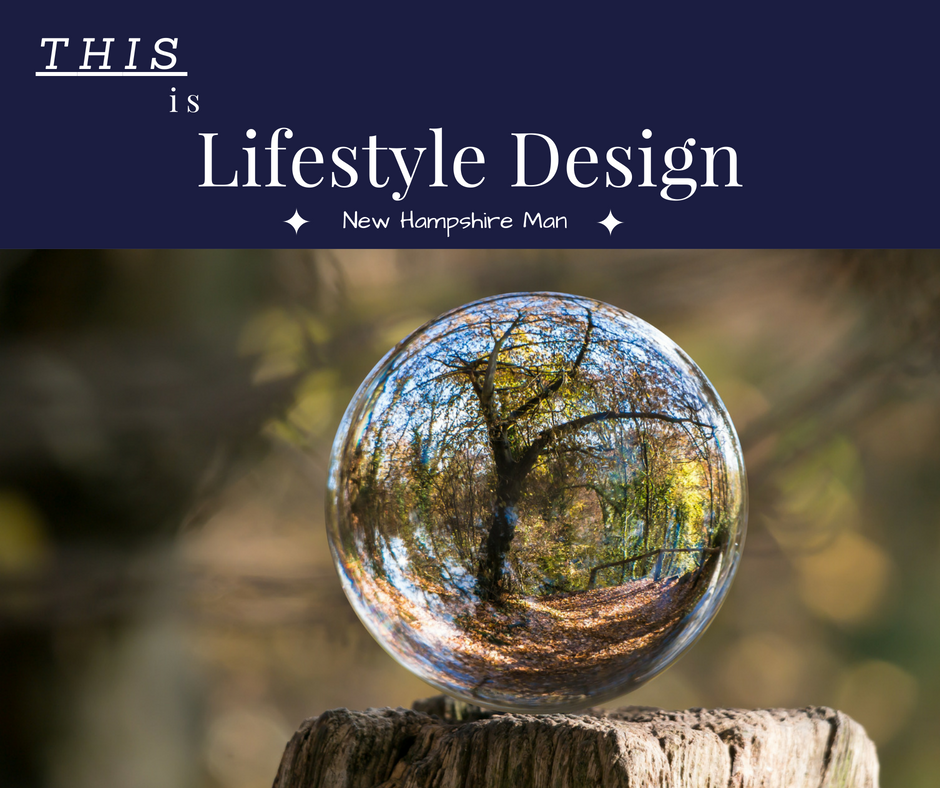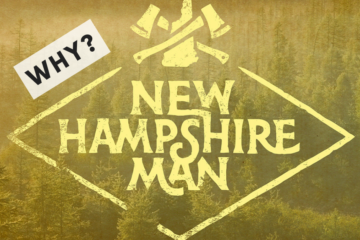After coming around to the idea of Personal Freedom, the next step is to purposefully design the path to get there. THIS is Lifestyle Design.
Here I provide a process to determine a true problem, and then the process to design a solution. It’s important to understand that no one else lives your life, so I can’t tell you what to do, all I can do is provide you the PROCESS to implement to get you where you want to go.
As I mentioned in the beginning of my article on Personal Freedom, the first step in the pursuit for personal freedom is to know where you are trying to go. Take the time to write down your 1/5/10 year goals as well as your life goal, and then come back here to Step 1.
Quick Tip: Download and print 2 copies of this Goal Setting Worksheet. Give one to your spouse, partner or best friend. Each of you fill it out alone. Then make a date night out of going over the answers together. Keep it fun.
The act of writing something down can sometimes be enough to drive us to follow through. To assist you in the Lifestyle Design process I created a free downloadable PDF workbook.
Download the Free Lifestyle Design Workbook Here
Now, let’s get into it.
 Step 1: Define the problem
Step 1: Define the problem
This is the most important, and most overlooked step.
More often than not, we detect a problem and instinctively and reflexively offer a solution. Without due diligence, we find ourselves far down a rabbit hole with an outstanding solution to the wrong problem. Or worse, we CREATE a problem to match our conceived solution.
Fortunately, we’re all born with the natural abilities to dominate this step. I know this because I have a young daughter, and she went through a phase where ‘why’ was her favorite question.
We cast if off after hearing it too often, but it’s actually incredibly powerful. By the time you get 3 why’s into what you THINK your problem is, your probably beginning to touch on what the ACTUAL problem is.
I invite you to try this after identifying what you perceive to be the biggest obstacle to accomplishing your life goal, whether it’s because you’re broke, or fat, or have no friends. Open your mind and dig deep for the real answer three why’s into what you think your problem is.
Once you derive the actual problem it needs to be translated into a one-sentence statement.
Step 2: Develop 3 ways to address the problem
A powerful step.
With every problem we have a tendency to move on the first solution we come up with. By taking the time to write down THREE different viable options we force ourselves to think a little harder and invoke some creativity.
Don’t be shy to make one solution a wild card – off the cuff – crazy – never-gonna-happen type solution.
Write down each conceived solution.
Step 3: Compare the three ways with one another
Time for a little open-minded brainstorming.
If this happens, then what happens?
What’s the worst case scenario?
Compare time, money and return on those investments with the risk and reward to each action.
Step 4: Modify as necessary, and pick a way forward
By now you should have a good feel for the best way forward and even if it’s what your intuition was at the onset, it will likely be modified or amended due to the brainstorming and creativity from the previous steps.
Circle the step that you choose and commit yourself to it.
Step 5: Take action on that decision.
All of this work is worthless without taking action.
Before you do, though, determine:
- What the milestones and goals are for this action
- How long you will be committed
- When you will reassess
Step 6: Reflect at predetermined intervals.
Everybody stops going to the Gym on January 15th.
Continue the action for the predetermined period of time. Don’t quit before you said you would. Ride it out and objectively reassess at the predetermine interval.
When you assess you will discover one of the following things:
- Your course of action was a poor one.
- Go back to step 1 with newfound knowledge.
- The course of action is working, but needs to be tweaked.
- Go to Step 4 with what you now know
- You’re crushing your goals
- Implement systems into your life to stay on track and then
- Figure out what the next biggest perceived problem is and address that problem back in Step 1.
Capitalizing on the Interconnections
The first time through this it will seem daunting. Keep the focus on the primary objective and critically assess your progress.
The second time it will make more sense.
The third time it will be easy.
Once this problem solving muscle is built, capitalize on your enhanced understanding by recognizing all the interconnections between important factors in your life. Find ways to improve your health by spending less (Money) on better quality food (Diet). Grow your social network (Relationships) by meeting people through recreational sports (Fitness). Improve your relationship with your child (Parenting) by learning how to meditate together (Mindfulness).
The web of interconnections will be limited only by your creativity.
Download the Lifestyle Design Workbook Here
The Design Process in Action
In my ‘About’ page I lay out the genesis for this project, New Hampshire Man, and also introduce The Applied Permaculture Project.
I’ll concede that in conversation I suck at explaining all the functions within The Applied Permaculture Project. But with the background of this post, and the previous post on Personal Freedom, the story might make more sense.
In 2015 I was recalled to Active Duty and mobilized to Djibouti, a small country in East Africa. Among the many things that made me miserable, realizing that I had given away decision making authority for my life took the greatest toll. In an effort to make lemonade out of that lemon, I advanced my study of Permaulture and designed a lifestyle to implement upon return.
My goal was to positively influence every important aspect of my life under the umbrella of one major project, The Applied Permaculture Project. Most people hear of Permaculture with an explanation around agriculture; Permanent Agriculture. I, however, learned that Permaculture can go much deeper than that and treat it, instead, as a study of Permanent Culture.
To improve my Culture, here are just a few of the many things I designed into The Applied Permaculture Project:
Food bearing systems
I expect that I will always grow annuals, but I now dedicate a lot of attention to perennials.
Perennials are the long game, the investment that takes 3-5 years to start paying off, but once they start, they can pay off for a century or more.
In addition to being an investment, growing food improves my Culture in almost every way:
- The food grown at home is, in most cases, healthier than the food at the store.
- The cost of seeds pales in comparison to the cost of food and is one way to recoup the cost of owning property.
- The act of gardening and landscaping is one of the most joyous and rewarding acts on Earth, for me.
- Growing food with my daughter strengthens our relationship.
- Growing food is a skill, I get better each year thus exercising my brain and problem solving skills.
- Sharing food with friends and family strengthens my social structure.
I am a creative person and could make this list go much longer, but in closing, please note that, for me, growing food serves as partial solution to many of life’s problems: health, parenting, and mindfulness to name a few.
Revenue Producing Systems
While in Djibouti, I started a small side hustle sharpening knives. When I came home, I grew that venture to generate revenue to purchase supplies to install The Applied Permaculture Project. That side hustle has been effective at generating money for plants, fencing, rainwater harvesting, and more, but it has also served every other important aspect of my life:
- Sharpening knives within the community has introduced me to many people I would have otherwise not met.
- Gaining customers has taught me a tremendous amount about marketing and business.
- Seeing me collect money at the end of my driveway inspired my 4 year old daughter to start a flower business.
- Sharing my skill of sharpening has opened tons of bartering opportunities, a web of connectivity in and of itself.
Yet another list limited only by creativity, but it’s important to note that I have no desire of becoming a full time knife sharpener. The small side hustle was designed to solve the problem of funding my dream, The Applied Permaculture Project.
Function Stacking
With systems in place to generate revenue to install sustainable food generating systems the opportunity for continued growth points up exponentially.
Growing food and starting a side hustle help my social network, it helps me be a better parent, it helps me generate and save money, it provides me the opportunity to learn skills to add resilience to our home. Once these systems are in place and established, opportunities will continue to multiply.
Inspiration
That is a mere snapshot of my story, but it cannot be yours.
You are responsible for generating your own story and implementing these Lifestyle Design techniques to bring abundance and happiness into your life. I introduce mine because, even though it’s just begun, I hope it can serve as inspiration for you to start too.
The first step is the hardest, but you have a lifetime to figure it out. You just need to start.
If you’re ready to take control of your life make sure you sign up for the New Hampshire Man Newsletter. Receive motivational content, because after you start something hard there will come a time when you want to quit. I’ll hold you accountable to accomplish your goals, all you need to do is ask.


